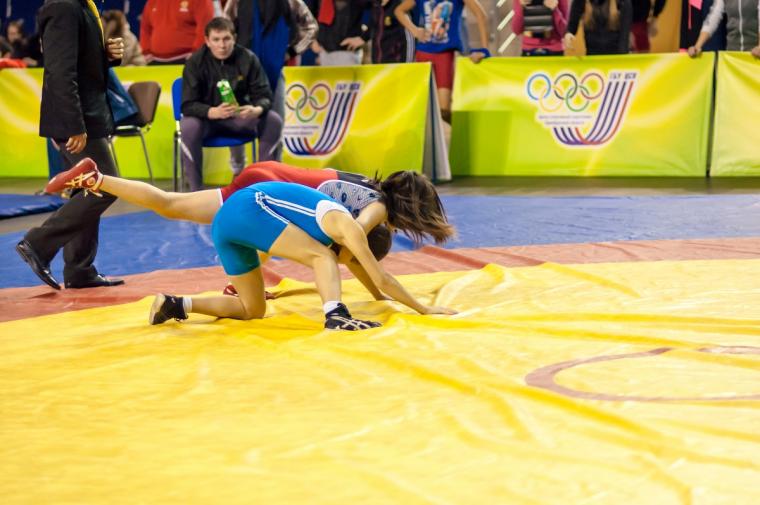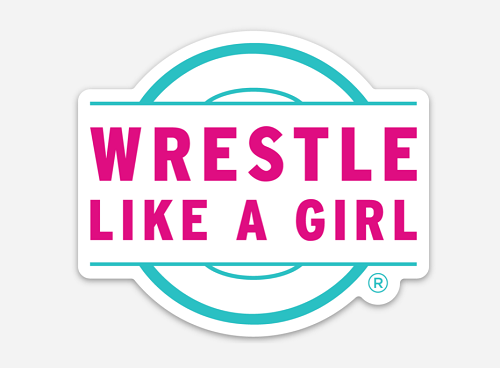
Wrestle Like A Girl (WLAG) defines itself as sitting at the intersection of wrestling, gender equality and social good with a focus on Strategic Programming, Advocacy and Education and Research. Its mission is to empower girls and women using the sport of wrestling to become leaders in life.
Sports Destination Management: Wrestling as a sport for girls and women has really grown.
Sally Robert: It has – five years ago, we had 17,000 wrestlers; this year, we crested at over 30,000.
SDM: Where do the statistics come from?
Roberts: We take all the figures from high schools as provided by NFHS, USA Wrestling, and recreation programs and we factor them together.
SDM: Are you a national governing body?

Roberts: No, we’re a national advocacy organization. We conduct limited competitions, and we will sponsor tournaments; our big event is the Women’s Wrestling Festival.
SDM: How long have events been offered for female wrestlers?
Roberts: We had the first world championship for girls back in 1987; at that time, it was open to girls who decided they wanted to go. Back then, there weren’t a lot of school programs for girls. In 2004, women’s wrestling first appeared in the Olympics and that really helped to increase the visibility of the sport.
SDM: Why does girls wrestling have such an appeal?
Roberts: It’s fun, it’s an individual sport but gives athletes the opportunity to compete as a team and represent their school, there are low barriers to entry – and on top of that, we have good role models. Helen Maroulis became the first-ever American to win a gold medal in women's freestyle wrestling at the Olympics in 2016, Tamyra Mensah-Stock just became the second Olympic Gold medalist for the USA and is the first ever Black female Olympic Champion in the world. The barriers to entry are low, which allows more opportunities to participate leading to why almost 45 percent of female wrestlers come from underrepresented communities. There is a notion that “If you can see it, you can be it” and I believe that is true for wrestling. We have athletes at the pinnacle of the sport, and everyone is working together to push the sport forward.
SDM: The Olympics obviously helped the sport.
Roberts: The team was so strong and fierce and what I was really drawn to is they have this incredible sisterhood – they were very supportive of one another and very uplifting. When you go to the Olympics there is an insane amount of pressure, but this team enjoyed every step of the way. They were over the moon to be there and encouraged each other to achieve their best.
 SDM: This year, for the first time, the National Federation of State High School Associations introduced weight classifications for girls in wrestling. It must be gratifying to see acknowledgment of the growth of the sport.
SDM: This year, for the first time, the National Federation of State High School Associations introduced weight classifications for girls in wrestling. It must be gratifying to see acknowledgment of the growth of the sport.
Roberts: We have seen tremendous growth. It started at the state level; in 2016, six states had high school wrestling programs for girls. Today, there are 33 states offering championship programs.
SDM: Are there any states where girls’ wrestling is particularly prominent?
Roberts: California – there is a huge number there. It’s great to see. Alabama had a lot of growth too.
SDM: The pandemic hurt all youth sports and wrestling, as a contact sport, obviously was affected as well.
Roberts: Any high-contact youth sport suffered badly. It was a huge challenge for us to have a loss of competitive events. When you look at what it can provide – college scholarships, the opportunity to be seen – you can see why it was so devastating. Girls who wrestled, and who came from working-class families were heavily impacted.
SDM: There were articles in the news about some wrestling programs, including those of high school girls, who pulled their mats outside in order to allow wrestlers to keep competing.
Roberts: Yes, the community really dug into social innovation so that they could keep competing. Something we also saw was that Penn State began including high school girls in their women’s wrestling matches. The girls were excited; they hadn’t had an experience like that before.
 SDM: What would you say is the biggest challenge to girls’ (and women’s) wrestling?
SDM: What would you say is the biggest challenge to girls’ (and women’s) wrestling?
Roberts: Wrestling is a niche sport, and we are a niche within a niche. It’s difficult to get the funds that will allow us to change policies and increase access to the sport. We need the financial resources and the investments into the sport to help it grow and evolve.
SDM: Wrestling is an NCAA Emerging Sport for Women. How close is it to becoming a championship sport?
Roberts: We need a total of 40 college programs to qualify as an NCAA Emerging Sport and we are incredibly close to getting there. I'm optimistic that we're less than five years away from the NCAA being able to host a women’s wrestling championship.
SDM: Are girls coming in from other sports to wrestling?
Roberts: What we’ve seen through our short history is that wrestling is not drawing girls from other sports – it’s more that we are providing an opportunity to those who are already interested. It’s interesting, though; we see a number of girls who used to wrestle with their boys’ teams and who are glad to have their own teams, and we also see some who say, “I was getting into fights in the parking lot and the wrestling coach came up to me and said they wanted me on the team.”
 SDM: What is the scholarship scene like?
SDM: What is the scholarship scene like?
Roberts: At the Division I level, there are scholarships; once we are able to have NCAA championships, those opportunities will increase. We are also seeing scholarship programs offered at other colleges; these include the NAIA – the smaller schools that might offer some girls opportunities closer to home, and the NJCAA, which could attract girls to wrestle while they are getting an education or maybe figuring out what they want to do next.
SDM: Are you optimistic about the sport’s future?
Roberts: Yes, I am; the sport is growing in leaps and bounds and it’s moving in a great direction. I’m also impressed with the leadership of the girls and women who are involved in the sport now – it’s just going to be unparalleled as they get older.

 wrestlelikeagirl.org
wrestlelikeagirl.org